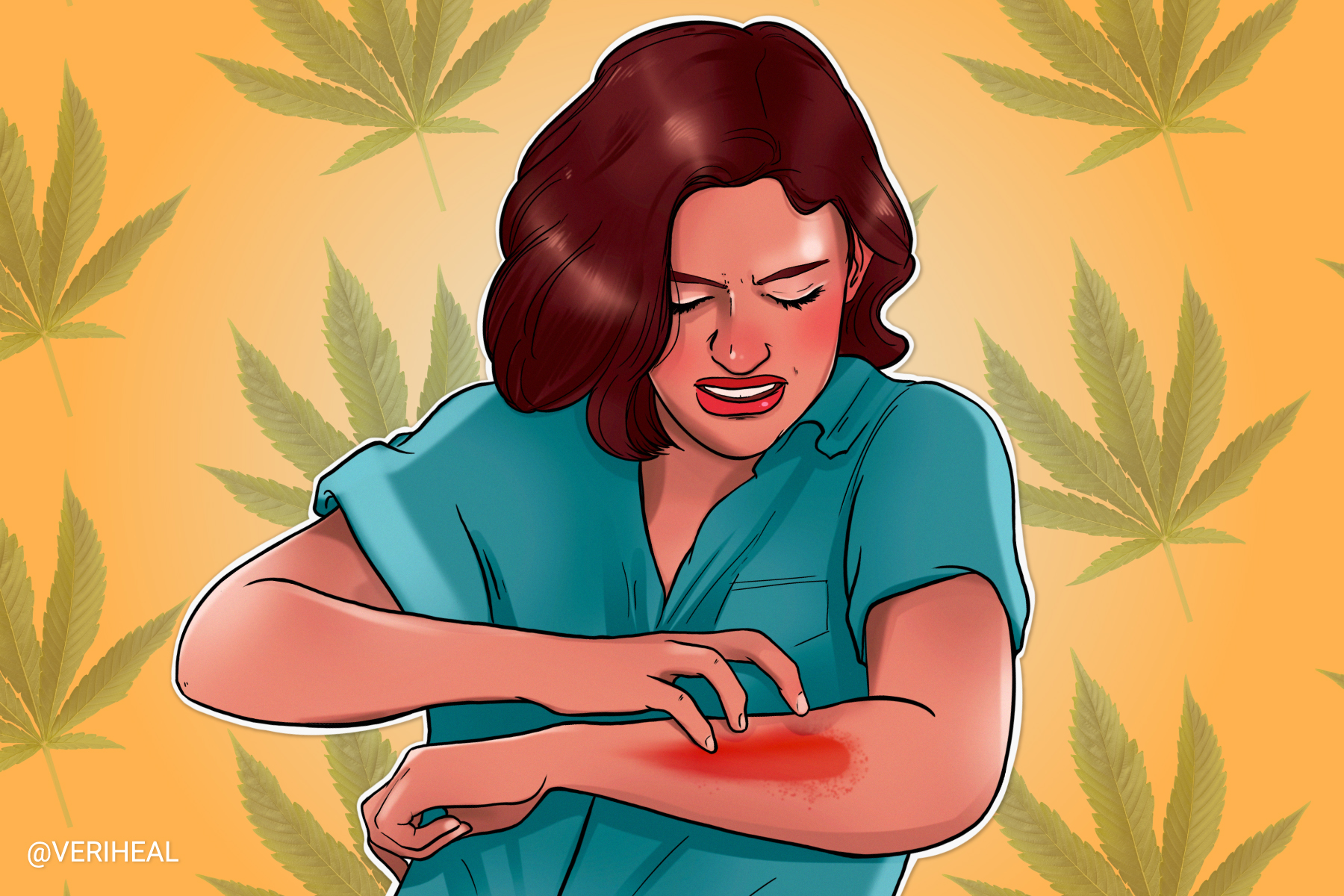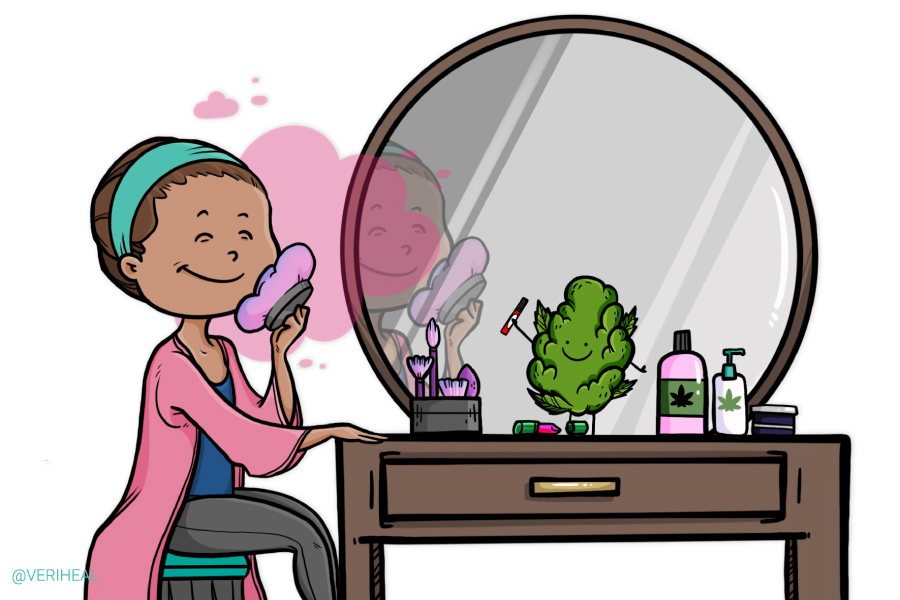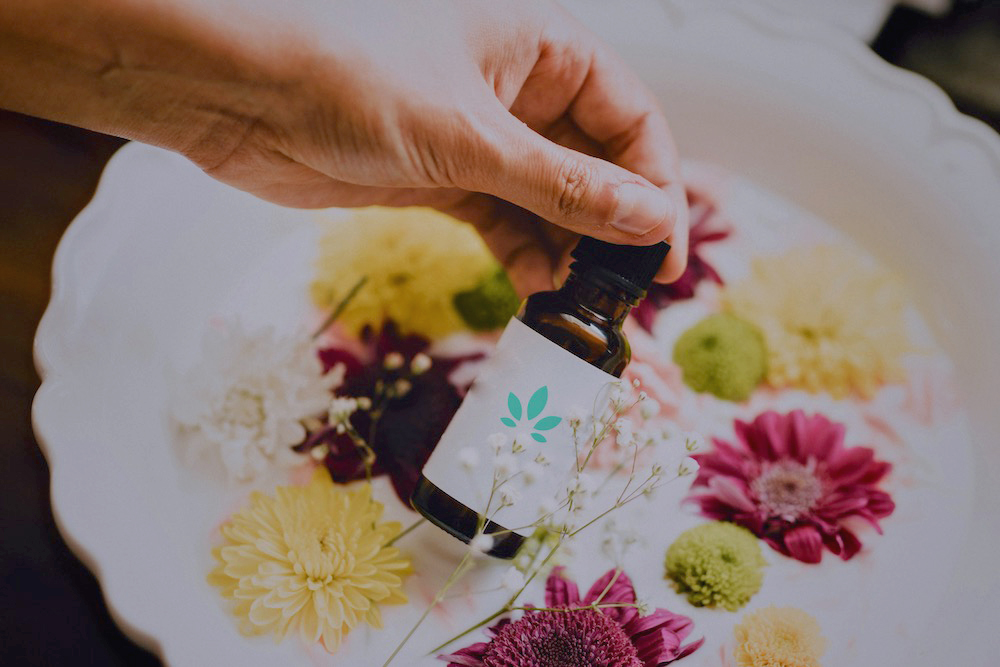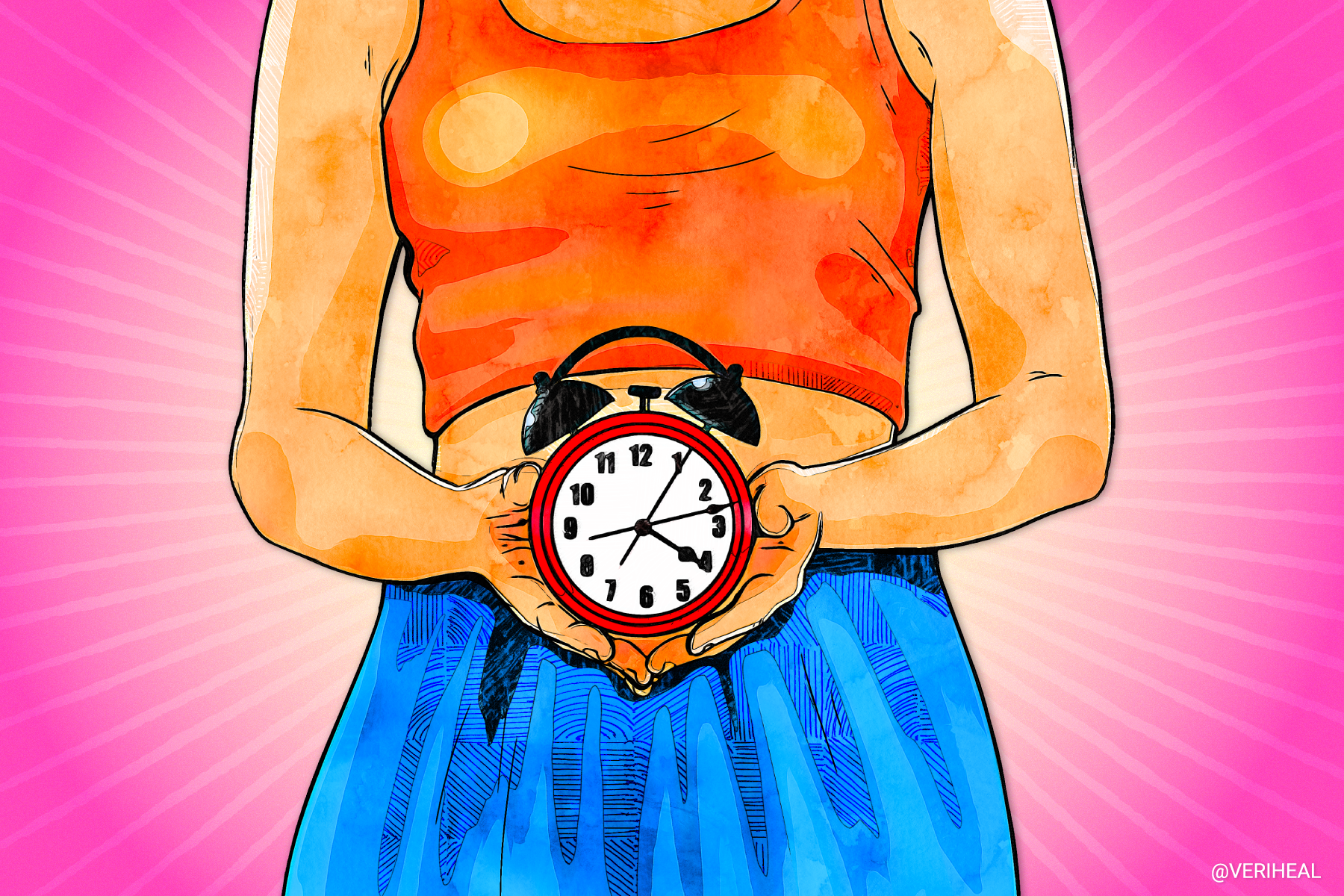How Medical Cannabis Can Help Treat Rosacea?
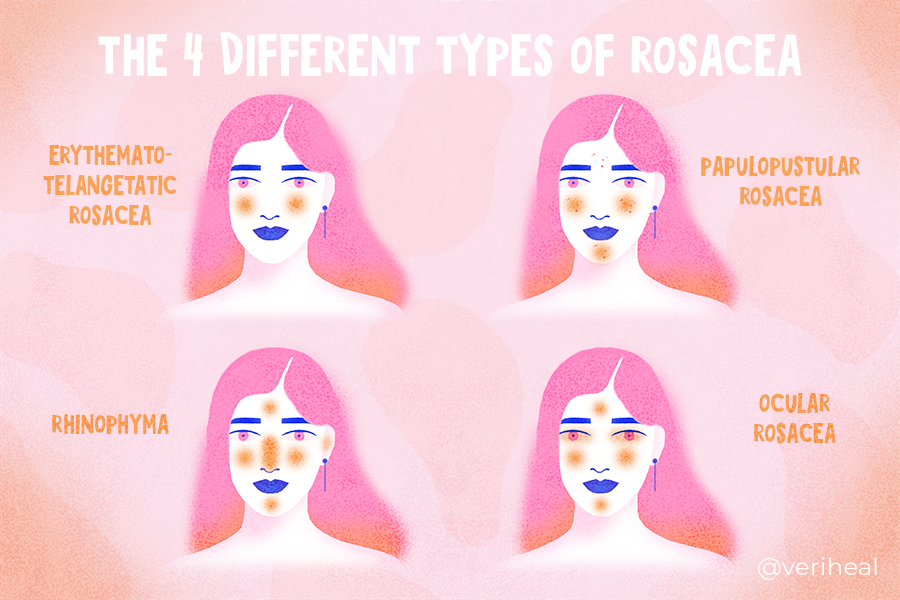
For patients with rosacea, this skin condition is much more than flush skin. It can cause chronic skin irritation, inflammation, and redness that seems to come and go, but it never completely goes away. Unfortunately, without treatment for rosacea, it will worsen over time. Thankfully there is a lot of research supporting the use of cannabis for chronic skin conditions such as rosacea.
Cannabis and its cannabinoids which include Δ9-tetrahydrocannabinol (THC) and cannabidiol (CBD) begin helping the body through the endocannabinoid system (ECS). The ECS consists of cannabinoid receptors CB1 and CB2. When these receptors are activated, various fatty-based neurotransmitters called endocannabinoids are activated. This process is responsible for several things our body is responsible for including controlling inflammation, our pain perception, and maintaining homeostasis.
Through research regarding the ECS and dermatology, scientists have discovered that endocannabinoids and medical marijuana can help relieve skin conditions including rosacea, eczema, acne, and psoriasis. The endocannabinoids anandamide (AEA) and 2-arachidonoylglycerol (2-AG) are responsible for helping the skin maintain its protective barrier (2). There are also numerous CB1 and CB2 receptors that can be found in the cells that produce keratin and collagen, as well as in nerve fibers of the skin, skin cells, sweat glands, hair follicles, and sebaceous oil glands of the skin.
Cannabis can help interact with the skin through transient receptor potential (TRP) receptors, particularly the vanilloid type (TRPV), which also helps with maintaining the skin barrier (2). In addition, researchers believe that TRP receptors play a role in developing rosacea as transient receptor potential ion channels have been shown to be activated when rosacea has been triggered (4)(8). This has been seen in vascular rosacea, papulopustular rosacea, and phymatous rosacea, making cannabis a potential method of treatment.
Cannabinoid Skincare for Rosacea
Because of the large amounts of endocannabinoids and receptors in the skin, researchers have found that cannabis-based topicals and creams can help the skin maintain a proper barrier when it has been damaged by chronic inflammation in rosacea and eczema (2). In addition to the fact that medical cannabis has antioxidant and anti-inflammatory properties. The endocannabinoid AEA has also been found to stimulate oil production in sebaceous glands as well as causing higher amounts of skin cell death. This might sound bad, however, when your skin cells die more rapidly, it regrows quickly, which promotes healing and helps eliminate scaling and irritated skin.
Sebocytes play an important role in reducing inflammation and oil production in acne as well as in inflammatory rosacea (2). When they are activated by cannabinoids, there is a reduction in inflammation of sebocytes, the cells found in sebaceous glands. This is seen through a study that applied CBD topically to the skin (5). Though CBD also can slow down sebum or oil production in the skin, this study showed that it can also help the skin correct oil production imbalances. Additionally, cannabinoids have antimicrobial properties that could potentially play a role in the immune response to bacteria in some patients with rosacea.
CBD May Help Rosacea
Most research in dermatology has shown that products containing CBD have a positive effect on the skin (7). When CB2 receptors are activated in the skin by CBD, topical products and CBD oil are able to decrease inflammation of the skin in eczema and rosacea as well as serve as an antimicrobial that can protect the skin from infections (12). This can also help with skin dryness, itchiness, and inflammation. Cannabinoids are popular for topical use because they are oil-based and repel water easily, which helps maintain the watery layer of the skin barrier (13). There is also anecdotal evidence from patients that medical cannabis helps with inflammatory skin diseases such as dermatitis, rosacea, acne, and psoriasis.
Thoughts to Consider About Rosacea and Cannabinoids
According to Dr. Patel from the Department of Dermatology at the University of Illinois at Chicago, cannabinoid-based products may not be ready to be recommended for use in skin conditions because the skin responds differently to different dosages of cannabinoids (7). Additionally, it is difficult to scientifically determine how well it may work because there are so many differences between topical products as they are not universally created the same. Topical dosing has not yet been established or well-studied, and the absorption of different cannabinoids varies up to 10-fold.
Consulting a dermatologist is necessary in order to understand how to take care of your type of rosacea and to see if you may require oral antibiotics. To treat rosacea you may need topical applications of antibiotics or steroid ointments.
It is important to fully evaluate the medical cannabis products that you decide to use in your body, including products that only contain CBD. Please check out our CBD guide for more information on what to look for when purchasing items from a dispensary.
Types and Symptoms of Rosacea
Despite its normal association with red, flushed cheeks and its ability to come and go, rosacea is quite complex. A flare-up can be triggered by heat, caffeine, stress, alcohol consumption, spicy foods, and other causes (10). There are four types of rosacea, and many patients may experience a combination of more than one type at a time. These various types are discussed below:
Subtype 1 – Vascular Rosacea
Also known as erythematotelangiectatic rosacea (ERT), this type of rosacea gives patients the stereotypical redness and flushing on the face (11). It is caused by small visible blood vessels that are under the surface of the skin. When these blood vessels become inflamed, they enlarge and become visible (10). Once the inflammation goes away, the redness on the face disappears. It is important to treat ERT because it can become more persistent, affect more skin, and even become permanent over time.
Subtype 2 – Inflammatory Rosacea
Inflammatory or papulopustular rosacea (PPR) can be easily confused with acne. Like acne, it is associated with whitehead pustules that become red, and swollen like pimples (10). The spots can also be filled with pus, called pustules (11). This type of rosacea mostly occurs on the cheeks, forehead, and chin. It can also appear on the scalp, neck, or chest. Researchers believe that papulopustular rosacea is caused by an immune response to the mites themselves or to bacteria naturally increased by Demodex mites, which are always on the skin and live near hair follicles (3).
Subtype 3 – Phymatous Rosacea (PhR)
This third type causes the skin to thicken and scar, which results in bumpy, swollen, and discolored skin. It is considered the rarest form of rosacea. It is mostly found in men on their noses, making their noses appear bulbous and red (10). When phymatous rosacea occurs on the nose, it is sometimes also referred to as rhinophyma.
Subtype 4 – Ocular Rosacea
Ocular rosacea occurs when patients also experience symptoms in their eyes, which makes them appear watery, red, or bloodshot (10). It can cause the eyes to burn or sting, as it causes the eyes to become dry and sensitive. Sometimes cysts can also form on the patient’s eyelids. Eyelid irritation, in general, is referred to as blepharitis (11).
Rosacea Causes
Though doctors do not have a clearly defined answer about what causes rosacea, they do have some general ideas. Keep in mind the causes of this skin disorder are different than what may trigger it. Potential causes of rosacea include (11):
- Inflammatory and immune responses – Some doctors believe that this response is like that of autoimmune diseases. Researchers have found higher levels of an antimicrobial and immune-modifying molecule called cathelicidins that may help eliminate harmful bacteria produced by the innate immune system (14).
- Changes in the blood vessels of the skin
- Genetic predisposition
- Problems with the skin’s ability to protect itself
- Hypersensitivity to Demodex mites or other bacteria that naturally live on our skin near hair follicles and in sebaceous or oil-producing glands of the skin.
- H. Pylori, a bacteria that causes people to develop stomach ulcers, is thought to stimulate a hormone that is responsible for flushing skin called gastrin (3).
Note: Veriheal does not intend to give this as professional medical advice. Do not attempt to self-diagnose, or prescribe treatment based on the information provided on this page. Always consult a physician before making any decision on the treatment of a medical condition.
1. All about rosacea. Rosacea.org. (n.d.). Retrieved November 19, 2021, from https://www.rosacea.org/patients/all-about-rosacea
2. Baswan, S. M., Klosner, A. E., Glynn, K., Rajgopal, A., Malik, K., Yim, S., & Stern, N. (2020). Therapeutic Potential of Cannabidiol (CBD) for Skin Health and Disorders. Clinical, cosmetic and investigational dermatology, 13, 927–942. https://www.ncbi.nlm.nih.gov/pmc/articles/PMC7736837/
3. Causes of rosacea: Demodex mites & microbes. Rosacea.org. (n.d.). Retrieved November 19, 2021, from https://www.rosacea.org/patients/causes-of-rosacea/demodex-mites-and-microbes
4. Garbutcheon‐Singh, K. B., & Smith, S. D. (2021). Cannabinoids interaction with transient receptor potential family and implications in the treatment of rosacea. Dermatologic Therapy. https://onlinelibrary.wiley.com/doi/abs/10.1111/dth.15162
5. Oláh, A., Tóth, B. I., Borbíró, I., Sugawara, K., Szöllõsi, A. G., Czifra, G., Pál, B., Ambrus, L., Kloepper, J., Camera, E., Ludovici, M., Picardo, M., Voets, T., Zouboulis, C. C., Paus, R., & Bíró, T. (2014). Cannabidiol exerts sebostatic and antiinflammatory effects on human sebocytes. The Journal of clinical investigation, 124(9), 3713–3724. https://www.ncbi.nlm.nih.gov/pmc/articles/PMC4151231/
6. O’Neill, C. A., Monteleone, G., McLaughlin, J. T., & Paus, R. (2016). The gut-skin axis in health and disease: A paradigm with therapeutic implications. BioEssays, 38(11), 1167–1176. https://onlinelibrary.wiley.com/doi/abs/10.1002/bies.201600008
7. Patel, P., & Lio, P. A. (2021). Safety and Sourcing of Topical Cannabinoids: Many Questions, Few Answers. J Clin Aesthet Dermatol, 14(8), 49–51. https://jcadonline.com/safety-and-sourcing-topical-cannabinoids/
8. Sulk, M., Seeliger, S., Aubert, J., Schwab, V. D., Cevikbas, F., Rivier, M., Nowak, P., Voegel, J. J., Buddenkotte, J., & Steinhoff, M. (2012). Distribution and expression of non-neuronal transient receptor potential (TRPV) ion channels in rosacea. Journal of Investigative Dermatology, 132(4), 1253–1262. https://www.sciencedirect.com/science/article/pii/S0022202X15356906
9. Tóth, K., Ádám, D., Bíró, T., & Oláh, A. (2019). Cannabinoid signaling in the skin: Therapeutic potential of the “c(ut)annabinoid” system. Molecules, 24(5), 918. https://www.mdpi.com/1420-3049/24/5/918/htm
10. Types of rosacea. Patient Care at NYU Langone Health. (n.d.). Retrieved November 19, 2021, from https://nyulangone.org/conditions/rosacea/types
11. U.S. National Library of Medicine. (2020, September 10). Rosacea: Overview. InformedHealth.org [Internet]. Retrieved November 19, 2021, from https://www.ncbi.nlm.nih.gov/books/NBK279476/
12. Kupczyk, P., Reich, A., & Szepietowski, J. C. (2009). Cannabinoid system in the skin – a possible target for future therapies in dermatology. Experimental Dermatology, 18(8), 669–679. https://onlinelibrary.wiley.com/doi/10.1111/j.1600-0625.2009.00923.x
13. Huestis M. A. (2007). Human cannabinoid pharmacokinetics. Chemistry & biodiversity, 4(8), 1770–1804. https://www.ncbi.nlm.nih.gov/pmc/articles/PMC2689518/
14. Causes of Rosacea: Innate Immune System. Rosacea.org. (n.d.). Retrieved December 6, 2021, from https://www.rosacea.org/patients/causes-of-rosacea/innate-immune-system



